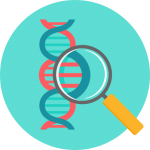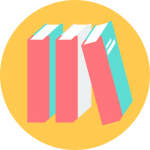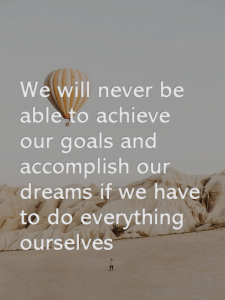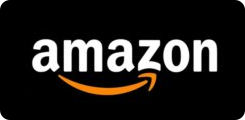The “Fake News” Phenomenon
Hi everyone, thanks for joining me. I’m Dr. Jacob and this is my read along for In Search of Truth. We will begin today on page 2 of the Author’s Note, last paragraph.
“Eventually, I did find people who were on a quest just like me. People with an innate desire to know and understand life. Those are the people for whom I wrote this book, the ones who are seeking perfection, who are not satisfied with being happy for just one moment.”
I have found that successful people have two characteristics that allow them to progress in society and obtain their goals. They must desire to know what’s going on around them:
- They care about life.
- They care about people who are around them.
- They care about what’s going on.
The second characteristic is they have the willpower to actually progress and improve—to put forth the effort to change.
The Evolution of Information and Society
As we move along in our development, the question becomes how do we progress? When I look at progression, I look at it like a journey, and in this journey, you have overcome different barriers to improve your ability to learn and change. The next paragraph I begin to discuss this journey.
Barrier 1: Finding Information

In the book, I discuss this journey through how society progresses. After we review through society progression, then we will discuss how this applies to the individual.
Over the history of humankind, society has encountered difficulties with the process of learning. During humankind’s development, the first issue was trying to understand how things worked (the process of discovering). This was solved through the scientific method and trial & error.
When we didn’t know anything, we had to actually go out and find the information.
Barrier 2: Sharing Information
 Once we had the information this caused another problem.
Once we had the information this caused another problem.
This led to the second issue: as we learned how to discover, we found the information and the understanding we were looking for, but we didn’t know how to make the information easily accessible. When I was young, the answers to all my questions were always somewhere, I just didn’t know where to find them or who to ask. This was solved by teachers and the education system and, eventually, the internet.
Once we discovered and had all the information, the next barrier we ran into was, how to get everyone the ability to access the information. The main thing that helped us overcome this barrier was technology and the internet. Smartphones allow you to access any piece of information that you really want from anywhere in the world.
Barrier 3: Organizing Information
 However, after the information was there and everyone could access it, we ran into the third barrier.
However, after the information was there and everyone could access it, we ran into the third barrier.
Now that we have lots of information and everyone has access to it, we have encountered the unique problem of discovering which information is accurate and relevant to what we want. Google realized this, and it capitalized on being able to sort information based upon who we are and what we want…
Now that there’s so much information accessible, it would take a very long time to listen to all the news and look at all the websites and read all the information available to you. This forces us to figure out how we get the relevant piece of information that we need, and how can we format it in a way that we can use it.
There are many different websites and services available that automatically collect, sort, and format information so that we do not have to spend our time to do it ourselves. For example, if you want to buy a house, you have websites like Trulia and Zillow. These websites allow you to go to one place so you can find all the information you need to buy a house. You can find the houses, look at the houses, see all the details to the houses. Everything is on one website and it’s in a usable fashion that you understand. It enables you to quickly identify what house you are interested in buying. It filters information and makes it usable to common person.
Barrier 4: Sifting Information
 This has led us to the fourth barrier.
This has led us to the fourth barrier.
“…but we still have an issue with understanding which information is accurate and most aligned with reality. This has recently been referred to as the ‘fake news’ phenomenon.”
Now society has sources of information in a very efficient format that is relevant to us. The issue becomes what is correct and what is false. How do we figure out if these sources are giving us correct information accurate to reality? As we move along this book, we will go over how we figure out if something is accurate or true.
Information in Our Own Lives
Looking at these four issues in regard to the individual, the journey of progression is the same.
First, we start out not knowing anything. If we want to learn, we have to go out and experience life for ourselves to get more information. We go through the process of trial and error to understand the laws of life.

The second problem is as we go through a trial and error process and we get more information, we realize it’s too slow. We will never be able to achieve our goals and accomplish our dreams if we have to do everything ourselves. This is another obstacle of accessing information. We need to find a way to get it quicker. We then learn to utilize the expertise of others and technology. We can do things quicker and learn things quicker when we work with more people. Being able to include everyone around you on your journey is quicker than doing it yourself.
All the issues deal with time, and the third issue is it takes too much time to talk to everyone and to read everything available. Take reading the news—it would take all day to read all the news. This forces us to be more efficient. We don’t want to talk to every single person in the world, so we start identifying the most important people that we’re going to talk to, to get what we need. We start thinking out of all the newspapers which newspapers are most relevant to what we want to read, and what we understand. We start looking at only the news sources that are relevant to us. As we do this, it then leads us to the fourth, and final, barrier which is how do we know the information we are receiving is correct or true? This is the core message of In Search of Truth
Weekly Challenge
This week, I would challenge you to look at your own life and see where you are on this journey of progression. Whichever barrier you’re facing, try to overcome that this week.
If you are fearful and you don’t really do anything, well try to get out there and get information for yourself through the trial and error. Go and do something. If you’re the type of person that you do everything yourself, well, try to take the next step of utilizing people around you. Every day, I ask myself:
- Am I doing too much myself?
- Do I need to utilize other people?
- Could asking and talking to other people help me reach my goals quicker?
On the other hand, maybe you spend a lot of time talking to people and reading the news or surfing the web. Maybe you need to start looking at places that you can get information that will allow you to get it quicker in a more relevant format so you can become more efficient.
Good luck this week on your journey of progression and we we’ll see you next week. Thanks so much!
Subscribe to this Blog Series here:
In Search of Truth is an independent publication by Dr. Jacob Kashiwagi. All proceeds are donated to the Leadership Society of Arizona 501(c)3 nonprofit organization.
The views expressed in the book are based on independent research and personal experience. This publication does not necessarily represent the views of LSA.


